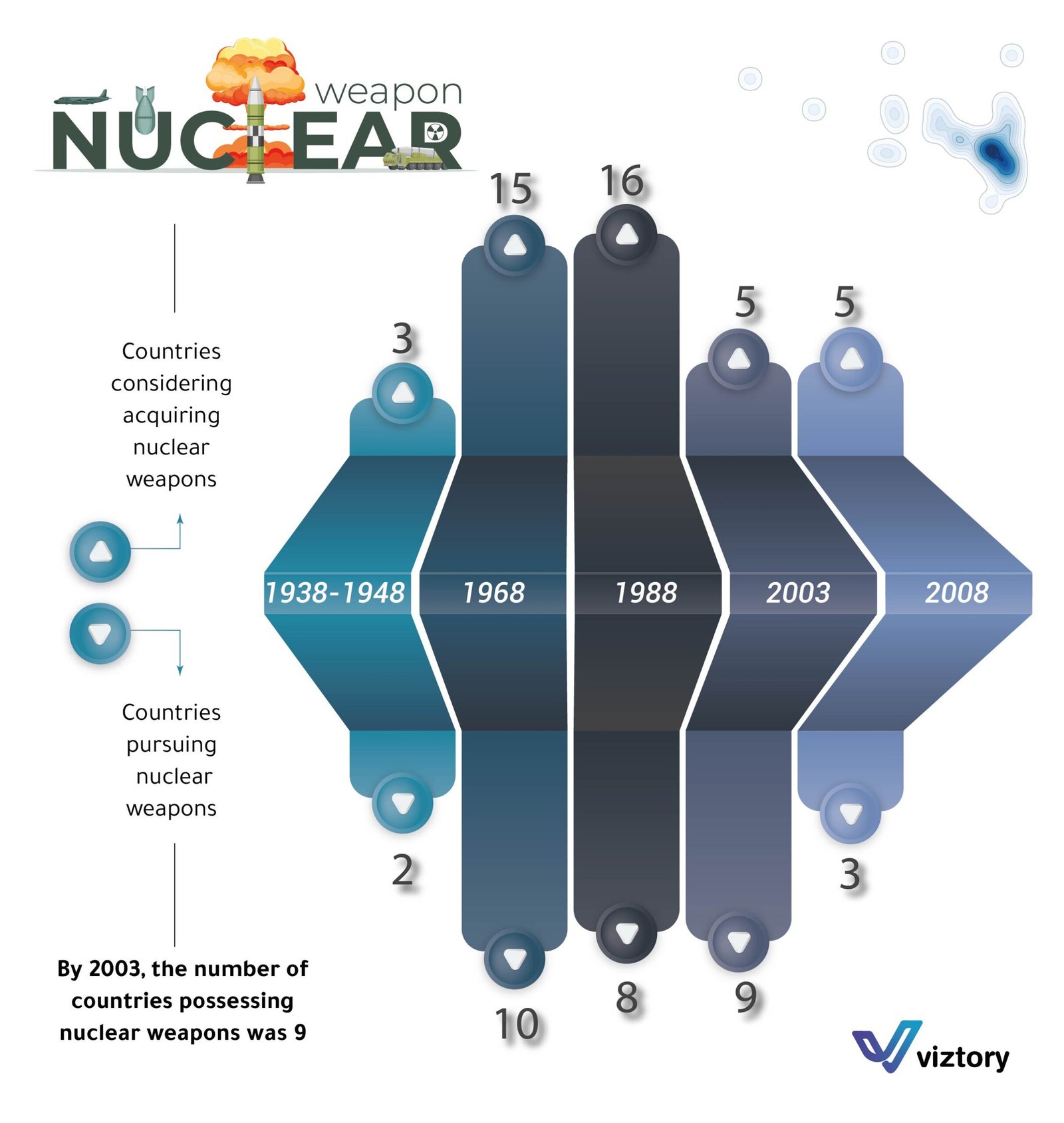Nuclear Technology: Its Journey and Expansion from Intentions to Reality
-
Aug, Thu, 2024
Nuclear Technology: Its Journey and Expansion from Intentions to Reality
The concept of possessing nuclear weapons emerged in the mid-20th century with the discovery of the immense power that could be released by splitting the atom. This technology became a revolutionary weapon that shifted the global balance of power and triggered a fierce race among nations to control this deadly technology. The attached image, which tracks the development of nuclear weapons proliferation among countries from 1938 to 2008, highlights this nuclear race that has deeply impacted international policies.
Since the end of World War II, the nuclear arms race truly began. The graph shows that the number of countries considering the acquisition of nuclear weapons gradually increased over the decades. By 1948, three countries were already contemplating nuclear weapons. With the advent of nuclear technology in military use, the number of countries pursuing this destructive weapon increased.
The image depicts the progression of this pursuit over the decades:
- 1938-1948: Only three countries were considering acquiring nuclear weapons.
- 1968: The number increased significantly to 15 countries, with 10 actively pursuing nuclear technology.
- 1988: This period saw the peak of nuclear ambition, with the number rising to 16 countries.
- 2003: The number dropped significantly to 5 countries.
- 2008: A gradual return of interest in nuclear technology was observed, with 5 countries still pursuing this goal.
This trend in the number of countries interested in nuclear weapons technology reflects the influence of modern technology in shaping global politics. Nuclear technology, thanks to rapid advancements in physics and engineering, has become more capable of influencing the political and military decisions of nations.
By developing nuclear weapons, countries have gained a significant deterrent capability, enabling them to assert themselves on the global stage. However, the proliferation of this technology has raised significant concerns about the possibility of it falling into the hands of irresponsible states or groups. Modern technology, despite its significant benefits to humanity in various fields, remains controversial when applied to armaments.
This is where the role of technology in monitoring and preventing the spread of nuclear weapons becomes crucial. Monitoring and tracking technologies, such as satellites and advanced sensors, have evolved to help limit the spread of these weapons.
In conclusion, while nuclear technology presents considerable risks, it remains a prominent example of how technology interacts with global politics and security. International efforts continue to try to control this dangerous technology, ensuring it is used only for peaceful purposes, such as energy generation, rather than as a tool for mass destruction.

